
Lot 1
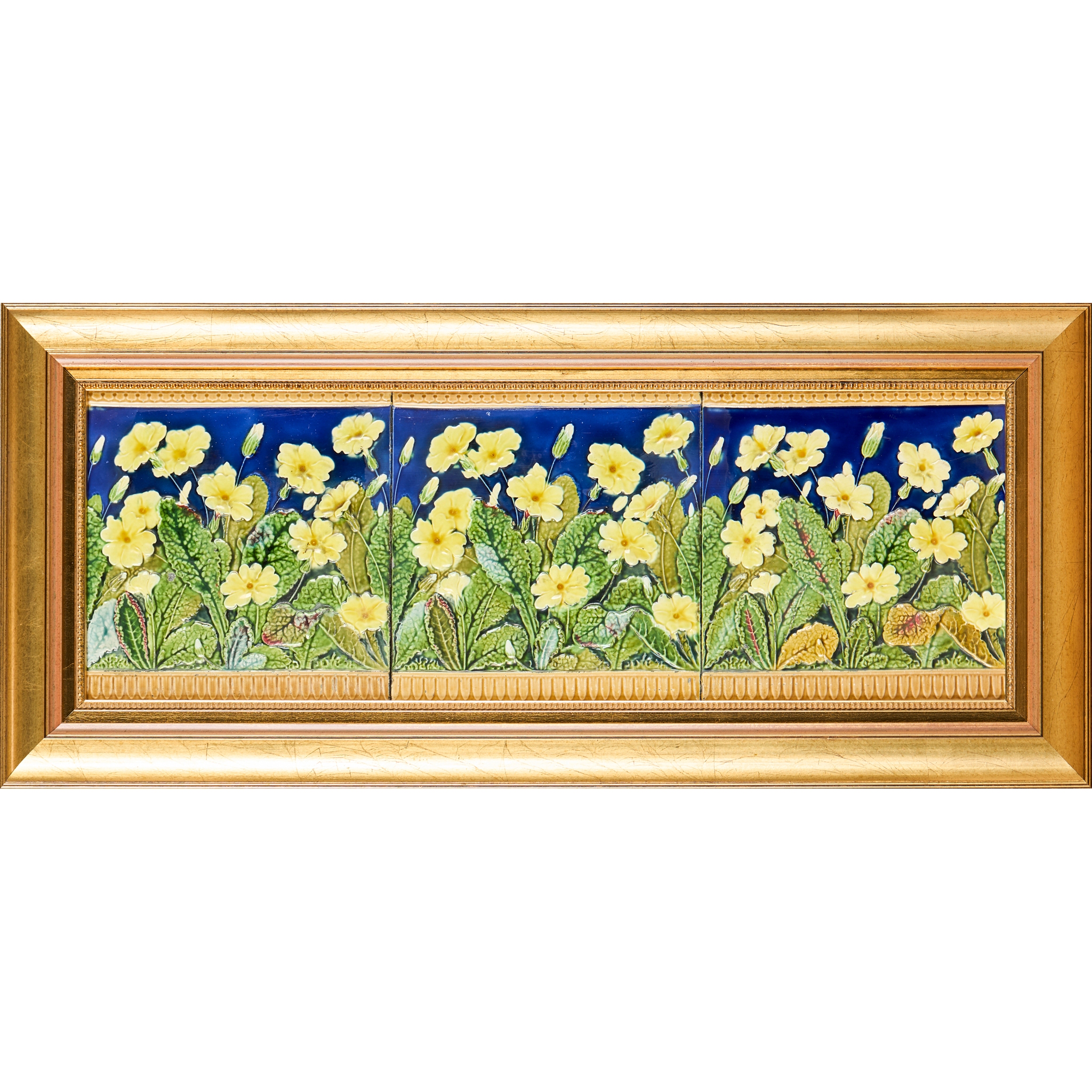
MINTON, HOLLINS & CO.
FRAMED MAJOLICA THREE-TILE PANEL, CIRCA 1880
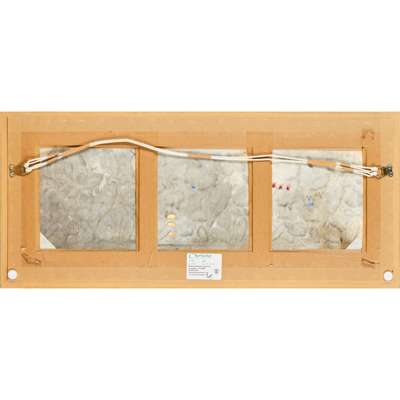

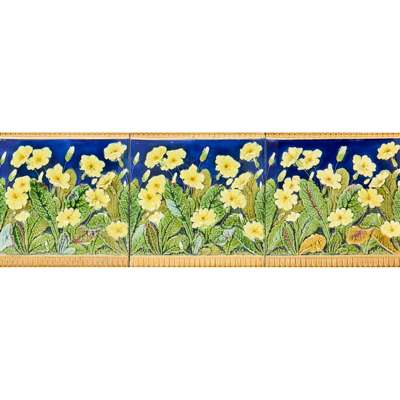


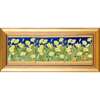
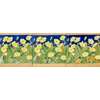
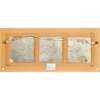
Auction: The Art of the Tile : The Michael Blood Collection | Wed 15th October from 10am
Description
glazed earthenware, marked verso STOKE ON TRENT/ NO.123078
Dimensions
20cm x 61cm (frame size 32cm x 73cm)
Provenance
The Michael Blood Collection
Footnote
THE ART OF THE TILE: THE MICHAEL BLOOD COLLECTION
Britain in the 19th century was in a turmoil of revolution though, unlike much of Europe, this was not political but rather economic, technical, industrial, social and domestic. Building on the firm foundation of the continuing Industrial Revolution established industries were modernised and expanded and many new ones were created, helping Britain into a position of considerable global economic dominance that was to continue through much of the Victorian era. The Great Exhibition of 1851, and the many similar international exhibitions that followed, were a reflection of all of this.
The British ceramic industry is a good example. Largely overshadowed by Europe and the Far East in the 18thcentury, it was dramatically revitalised in the first half of the 19th century, achieving by the 1860s a position of international stature. The main reasons for this were technical and include the development of transfer printing, the invention of bone china and other fine clay bodies, great improvement in glaze and firing technologies and, on a wide level, the application of steam power and other mechanical production and distribution processes. While much of this new ceramic industry was based on traditional roots, there were some important new developments, notably the design and manufacture of tiles and architectural ceramics. Until the1830s Britain had not had an important tile industry since the Middle Ages and it is significant that the foundation of this new tile industry was the desire to recreate the encaustic or inlaid tiles of the medieval period. As in other parts of the ceramic industry, this revival was led by technology. The key development for the tile industry was the mechanised production of tiles by the dust pressed process, patented by Richard Prosser in 1842, which launched a massive expansion of the industry from that date. Several potters were involved but the key figure was Herbert Minton who launched his first range of new encaustic tiles the same year, making Minton the key player in this new industry for the rest of the century. There were also important improvements in tile decoration, using new printing processes and expanded ranges of coloured glazes, notably those created by Minton’s French Art Director, Leon Arnoux, for his new majolica ranges. As a result, tile making became a major industry in the Potteries, the Severn valley, Yorkshire, London and elsewhere, supplying both home and overseas markets, with many of the big names, Wedgwood, Copeland, Doulton for example, becoming major players.
Tile making was an integral part of the bigger architectural ceramics industry, part of the design revolution that changed the look of Britain in the 19th century. Architects and designers came together to expand the decoration of buildings inside and out. Terracotta and coloured tiling were used extensively to ornament the exterior of buildings, particularly those in the public domain, town halls, hotels, railway stations, libraries, schools and so on, while the interiors often featured a variety of coloured and decorative tile finishes, literally from floor to ceiling. This love of colour and ornament spread rapidly to shops, and domestic housing, even to the humble terraces of industrial towns and cities.
Styles were extraordinarily diverse in a typically Victorian way, ranging from Gothic and Classical to Renaissance, French, Middle Eastern, Indian and Japanese, and often mixed together in the glorious stylistic muddle that defines Victorian taste and design. For the tile industry that was a perfect market, and surviving factory pattern books are a riot of colour and design as the many tile makers fought for their share of this new fashion-driven market. Many famous artists and designers worked for the tile industry, including C. F. A. Voysey, A. W. N. Pugin, Lewis F. Day, Christopher Dresser, William de Morgan and Walter Crane. Tiles were put on floors and walls, and inset into fireplaces, tables, chairs and other furniture in shops, pubs and houses and even in ocean liners. They were part of a major design and style revolution, and an important part of the development of what is now called interior design. Towards the end of the 19th century these elements became ever more important, with tiles playing their part in the success of the Aesthetic Movement, Arts & Crafts and Art Nouveau.
The Michael Blood collection is exceptional in its diversity and as a mirror of the Victorian tile industry and its market. It ranges from the revived encaustic tiles of the 1840s to the slip-trailed designs of Art Nouveau. However, the emphasis is on the great days of the Victorian tile revolution, from the moulded and highly coloured majolica to the softer and more sensuous production of the Arts & Crafts era, with its focus on the decorative aspects of naturalism and the female figure. Complimentary are an exciting variety of majolicawares, along with decorative Arts & Crafts productions, such as stained glass and metalware, which help to define the nature of interior design in late Victorian Britain, of which tiles were a part. Included are tiles from over 20 makers, from the big names to some little-known today, such as Steele & Wood, Joseph Cliff, T & R Boote and Sherwin & Cotton. Famous artists, designers and decorators are represented, again both famous and less familiar names, along with some of the pioneering women who were an important part of the industry, though often anonymous. The relative shortage of the famous printed designs by artists such as John Moyr Smith, the product of mass production, was a conscious decision as Michael sold many of these pieces from his collection to focus on more individual work.
Michael lived with his tiles around him, framed and presented as works of art rather than as parts of a design scheme. Weare now used to seeing tiles by William de Morgan, and others, as single design statements, but need to remember that they, and many other tiles, were created to be seen en masse, as a kind of ceramic wallpaper, a key component of a total, and usually colourful, design scheme. Nonetheless, what he collected and presented was a remarkable vision of the Victorian tile industry, one of the great achievements of that extraordinary era.
Further note on Michael Blood
Michael Blood’s interest in tiles began more than forty years ago, when he was given two examples unearthed during restoration work at Rufford Abbey, where he lived at the time. Those first pieces sparked a lifelong fascination that grew into a carefully assembled collection. In the early years he bought widely from antique centres, but over time his focus turned towards finer pieces, particularly those of the Aesthetic Movement, William De Morgan, and artists such as Henry Stacey Marks. While the collection was very much Michael’s own, he was supported throughout by his partner Malcolm Bescoby, whose encouragement helped sustain his endeavours. Together they also created a remarkable garden, which gained national recognition when it won the National Garden Competition in 2016.
Michael Blood’s interest in tiles began more than forty years ago, when he was given two examples unearthed during restoration work at Rufford Abbey, where he lived at the time. Those first pieces sparked a lifelong fascination that grew into a carefully assembled collection. In the early years he bought widely from antique centres, but over time his focus turned towards finer pieces, particularly those of the Aesthetic Movement, William De Morgan, and artists such as Henry Stacey Marks. While the collection was very much Michael’s own, he was supported throughout by his partner Malcolm Bescoby, whose encouragement helped sustain his endeavours. Together they also created a remarkable garden, which gained national recognition when it won the National Garden Competition in 2016.
Michael’s involvement went beyond his own collecting. With Malcolm’s support, he played an important role in the wider community, co-organising the Nottingham Tile Fair from the early 1990s. The fair raised significant funds for the Tiles and Architectural Ceramics Society, while also providing a meeting place for collectors and enthusiasts from across Britain and abroad. Michael and Malcolm made many friends both at the fair and when hosting visits to the house afterwards.
Michael’s fine collection, and the enthusiasm with which he grew and shared it reflect his delight in, and appreciation of ceramic art.







